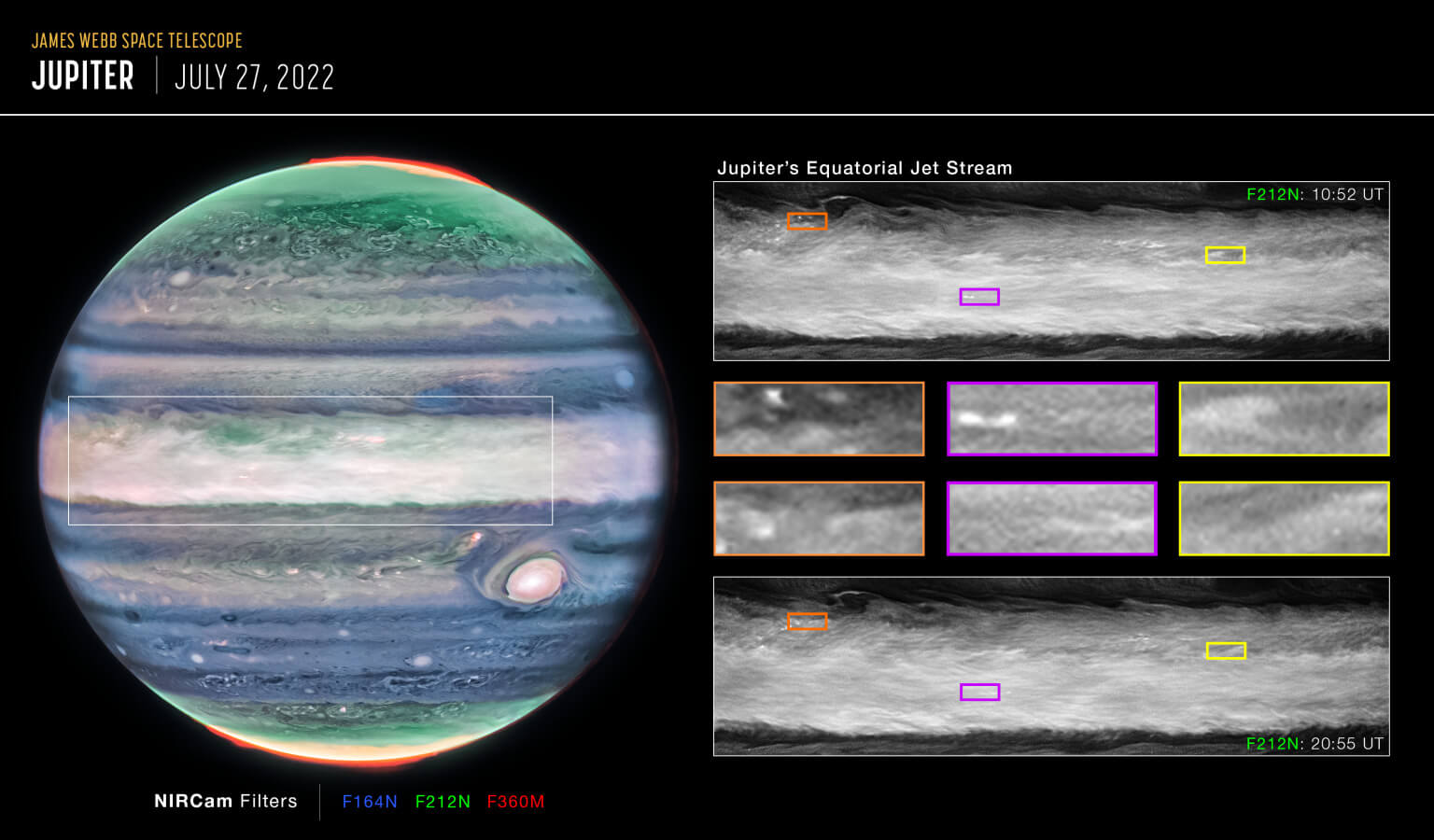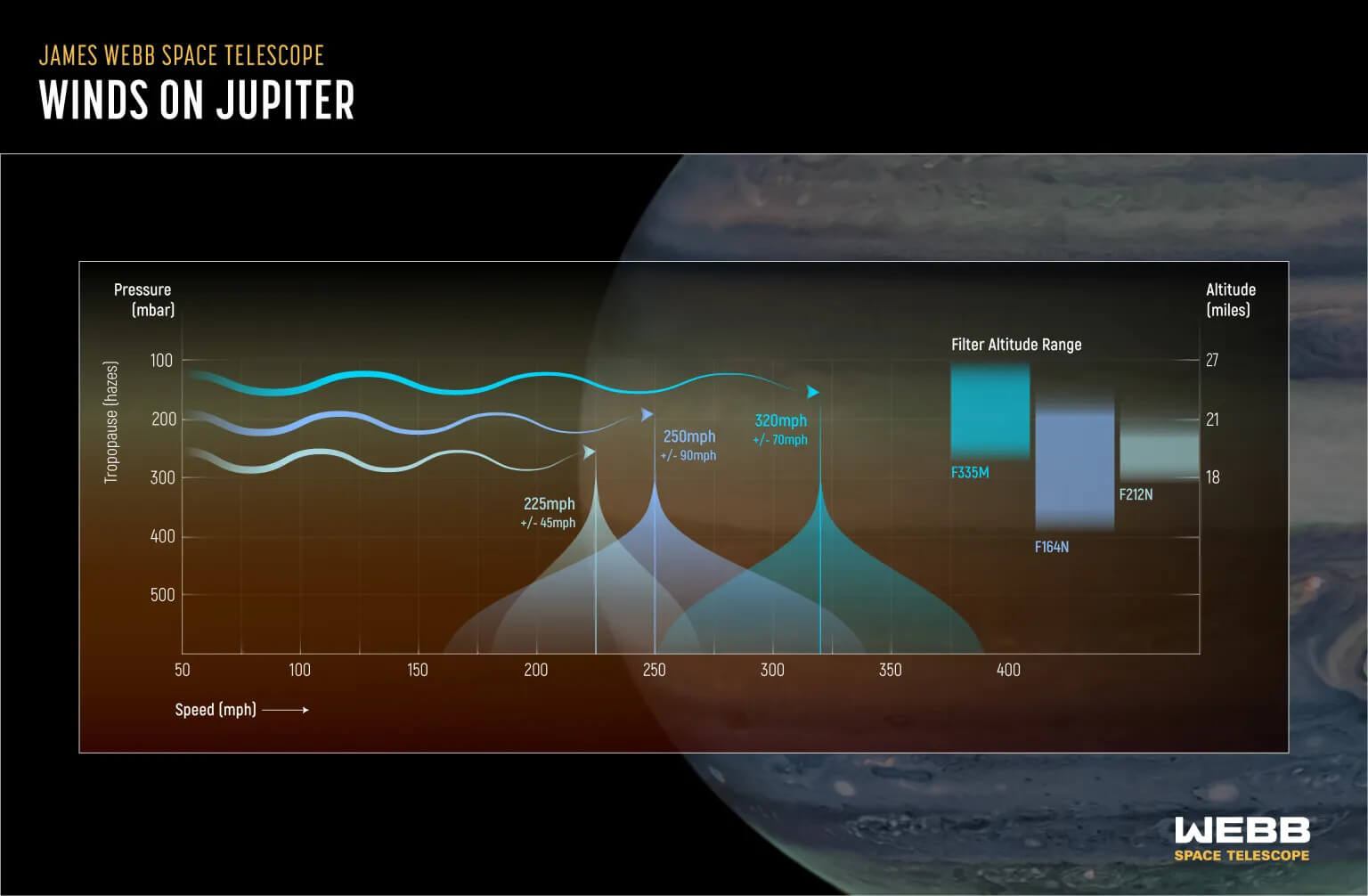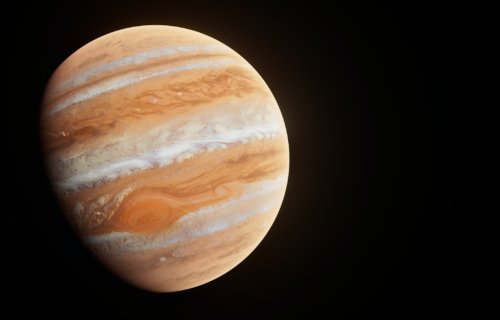WASHINGTON — NASA’s James Webb Space Telescope has made an out-of-this-world discovery in Jupiter’s atmosphere, revealing a high-speed jet stream previously unseen by astronomers. This jet stream — with speeds over 300 miles per hour — spans an impressive 3,000 miles in width and hovers above Jupiter’s equator, just beyond its main cloud layers.
The revelation of this colossal jet is shedding light on how Jupiter’s famously tumultuous atmosphere interacts with its different layers and demonstrates the unique capabilities of Webb in tracking these features.
“This is something that totally surprised us,” says study lead author Ricardo Hueso, from the University of the Basque Country in Bilbao, Spain, in a media release. “What we have always seen as blurred hazes in Jupiter’s atmosphere now appear as crisp features that we can track along with the planet’s fast rotation.”

Scientists analyzed data captured by Webb’s Near-Infrared Camera (NIRCam) in July 2022 as part of the Early Release Science program. The program was designed to capture images of Jupiter at intervals of 10 hours, equivalent to one day on Jupiter. These images were taken using four different filters, each designed to detect changes in small features at various altitudes within Jupiter’s atmosphere.
While previous missions like NASA’s Juno and Cassini and the Hubble Space Telescope have studied Jupiter’s changing weather patterns, Webb has already provided novel insights into Jupiter’s rings, satellites, and its atmosphere. This newfound understanding is a result of Webb’s ability to look deeper into the near-infrared spectrum, providing a view of the higher-altitude layers of Jupiter’s atmosphere, approximately 15 to 30 miles above its cloud tops. In this range, high-altitude hazes that typically appear blurry are now being resolved into finer details.
The newly discovered jet stream on Jupiter travels at an astonishing speed of about 320 miles per hour, which is twice the sustained winds of a Category 5 hurricane on Earth. Situated approximately 25 miles above the clouds, this jet stream resides in Jupiter’s lower stratosphere.
By comparing the winds observed by Webb at higher altitudes with the winds measured at deeper layers by the Hubble Space Telescope, the research team was able to calculate the rate of change in wind speed with altitude, known as wind shears.
While Webb’s remarkable resolution and wavelength coverage played a crucial role in detecting small cloud features used to track the jet stream, the complementary observations from Hubble, taken just one day after Webb’s observations, were essential to establish the baseline state of Jupiter’s equatorial atmosphere and observe the development of convective storms that were not connected to the jet.

“We knew the different wavelengths of Webb and Hubble would reveal the three-dimensional structure of storm clouds, but we were also able to use the timing of the data to see how rapidly storms develop,” says Michael Wong of the University of California, Berkeley, who led the associated Hubble observations.
Researchers are eagerly anticipating further observations of Jupiter with Webb to determine whether the jet’s speed and altitude change over time.
“Jupiter has a complicated but repeatable pattern of winds and temperatures in its equatorial stratosphere, high above the winds in the clouds and hazes measured at these wavelengths,” notes team member Leigh Fletcher of the University of Leicester in the United Kingdom. “If the strength of this new jet is connected to this oscillating stratospheric pattern, we might expect the jet to vary considerably over the next 2 to 4 years – it’ll be really exciting to test this theory in the years to come.”
The study is published in the journal Nature Astronomy.
You might also be interested in:
- JWST reveals colors of Earendel — the most distant star ever detected
- Jupiter’s moon Europa may be hiding alien life under its icy shell
- Astronomers discover which planets will survive the death of our sun

